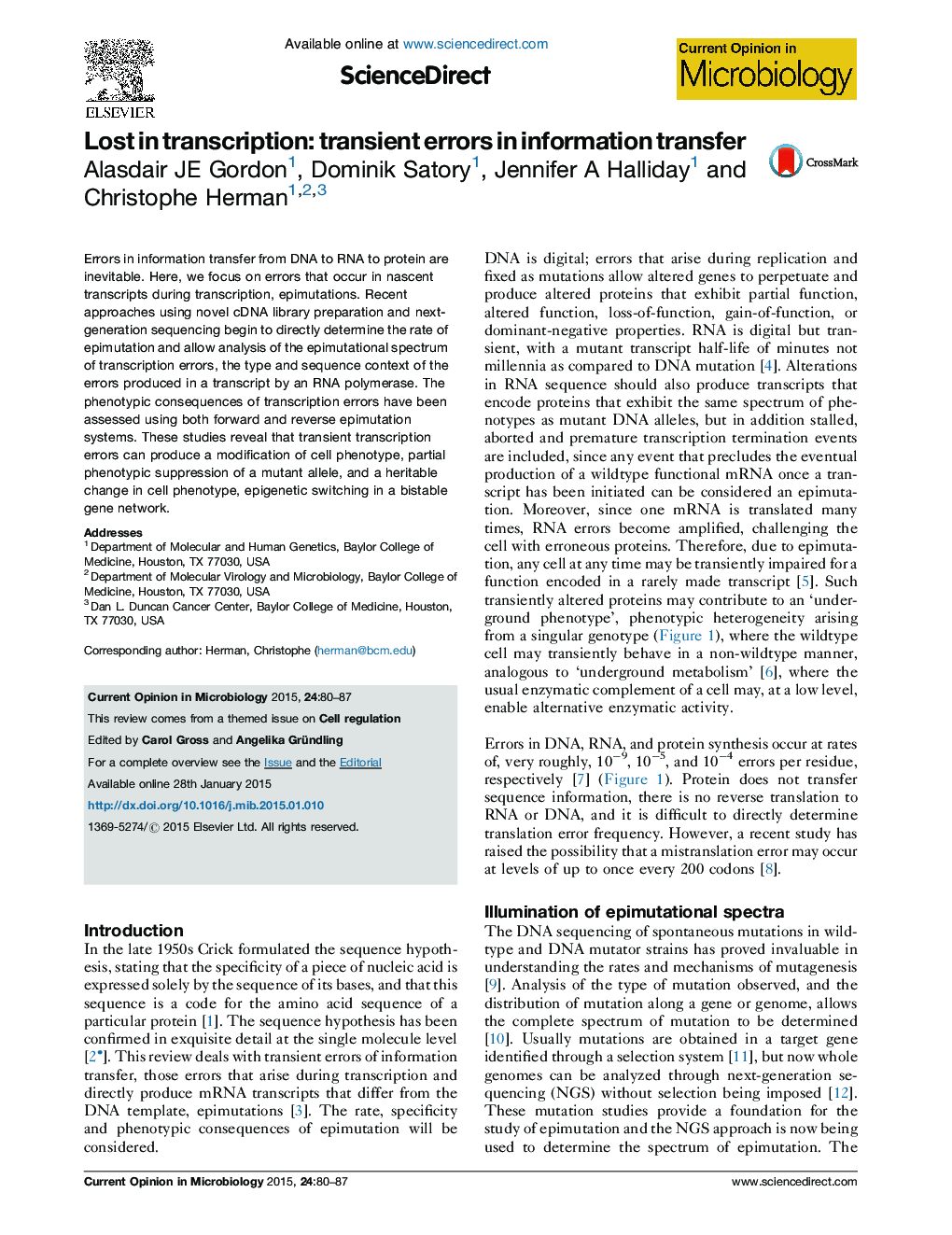| Article ID | Journal | Published Year | Pages | File Type |
|---|---|---|---|---|
| 3399056 | Current Opinion in Microbiology | 2015 | 8 Pages |
•RNA transcription errors arising in a nascent transcript are considered epimutations.•Next-generation sequencing (NGS) is applied to epimutation.•Novel cDNA library preparations for NGS allow analysis of the spectrum of epimutation.•Forward and reverse epimutation systems identify and assess RNA fidelity factors.•Phenotypic consequences of epimutation are placed in the context of transcriptional burstiness.
Errors in information transfer from DNA to RNA to protein are inevitable. Here, we focus on errors that occur in nascent transcripts during transcription, epimutations. Recent approaches using novel cDNA library preparation and next-generation sequencing begin to directly determine the rate of epimutation and allow analysis of the epimutational spectrum of transcription errors, the type and sequence context of the errors produced in a transcript by an RNA polymerase. The phenotypic consequences of transcription errors have been assessed using both forward and reverse epimutation systems. These studies reveal that transient transcription errors can produce a modification of cell phenotype, partial phenotypic suppression of a mutant allele, and a heritable change in cell phenotype, epigenetic switching in a bistable gene network.
